By now, we all know exercise is good for both our mental and physical health, but do you know why? Simply moving your body through exercise releases feel-good endorphins like serotonin, which can improve your mood and decrease anxiety and depression. Additionally, exercise can help keep your mind sharp as you age. Regular physical activity also has positive effects on your cardiovascular health and can reduce your risk of developing some chronic conditions such as heart disease and certain types of cancers.
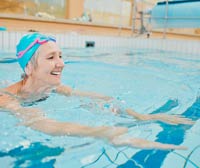 There are four main types of physical activity that help improve your physical and mental health:
There are four main types of physical activity that help improve your physical and mental health:
- Aerobic — Anything that increases your heart rate such as brisk walking, running, swimming and dancing.
- Strength training — Exercises that use resistance to muscle contraction to strengthen your muscles. Lifting weights and doing squats and push-ups are good examples.
- Flexibility — When you do yoga and stretches, that type of exercise improves the range of motion at your joints.
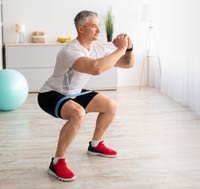 Balance — To keep your body stable when you’re moving or standing, you’ll want to include yoga, tai chi or similar exercises in your arsenal of physical activities.
Balance — To keep your body stable when you’re moving or standing, you’ll want to include yoga, tai chi or similar exercises in your arsenal of physical activities.
Incorporating all four types of exercise into your routine helps improve your overall wellness!
“If you’re a beginner, or coming back to exercise after a break, congratulations on your commitment to start moving to improve your health!” says Hayley Flott, PDRMA Wellness Consultant. “Here are some tips to help you start off on the right foot and stay safe.”
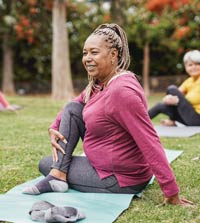 Tell your doctor you’re planning to increase your physical activity — especially if you have a chronic disease.
Tell your doctor you’re planning to increase your physical activity — especially if you have a chronic disease. - Increase your activity slowly and set reasonable goals. Plan to exercise for at least 10 minutes, even if you’re not in the mood. You might be inspired to keep going!
- Pick an activity you enjoy! There are many types of aerobic exercises, so if you don’t like running, look into a fun exercise class at your local gym or tune into one on YouTube.
- Expect some soreness after working out — you’re exposing your muscles to stress they aren’t used to, but they’ll get stronger and will soon adapt to your new level of activity. But always talk with your doctor if something doesn’t feel right.
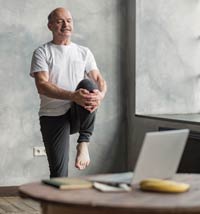 Find an exercise buddy or team to rely on for inspiration, and maybe work with a personal trainer to learn proper form.
Find an exercise buddy or team to rely on for inspiration, and maybe work with a personal trainer to learn proper form.
“Everyday activities like taking the stairs instead of an elevator, cleaning the house and gardening are also types of physical activity that improve our health,” explains Flott. “Being sedentary (not moving for large amounts of the day) can increase the risk of cardiovascular disease and death in adults.”
What Are the Physical Benefits?
- Health professionals recommend 150 minutes each week of moderate physical activity, but you’ll see benefits even without hitting that number.
- Regular physical activity can lower your blood pressure, improve cholesterol levels and reduce the risk of developing type 2 diabetes.
- Physical activity may help reduce serious outcomes from the flu, pneumonia and COVID-19. The Centers for Disease Control and Prevention found physical activity can decrease COVID-19 hospitalizations and deaths, while inactivity increases those risks.
- If you’re a cancer survivor, you, too, can benefit from exercise. The American College of Sports Medicine’s Roundtable recommends every cancer survivor should maintain some level of physical activity. (Check with your doctors before beginning an exercise program.)
Exercises That Help as You Age
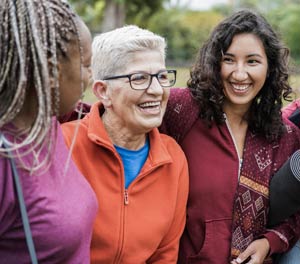 As we age, doing a variety of physical activities improves physical function and decreases the risk of falls and/or injuries.
As we age, doing a variety of physical activities improves physical function and decreases the risk of falls and/or injuries. - Strength training activities like lifting weights can help increase/maintain your muscle mass and strength as you get older.
- Regular activity can reduce pain and improve function for people with osteoarthritis. It also helps control blood sugar levels and lowers the risk of heart disease and nerve damage for type 2 diabetics.
- Simply walking more steps each day helps lower your risk of premature death, period!
“Don’t forget that PATH can help you achieve your activity goals,” adds Flott. “You can work with a personal Health Coach for free, create an exercise group to keep you motivated and even launch a personal challenge for yourself or invite your friends!
The PATH program is the perfect way to enjoy your agency’s parks and facilities — and all the benefits that come from exercising.”
Resources
If you’re an HMO participant, you do not have access to MDLive. However, check with your primary care provider for information about what telehealth options you can access. 






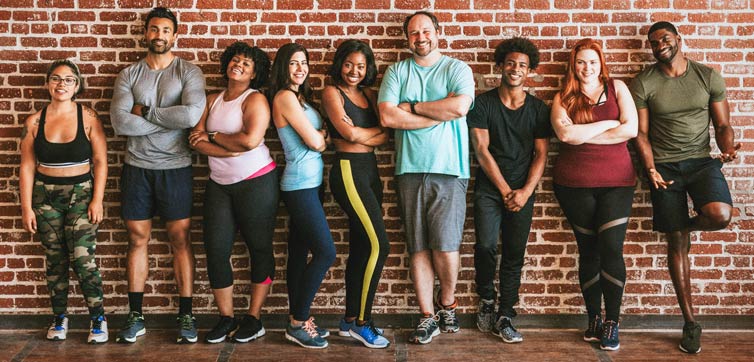
 There are four main types of physical activity that help improve your physical and mental health:
There are four main types of physical activity that help improve your physical and mental health: Balance — To keep your body stable when you’re moving or standing, you’ll want to include yoga, tai chi or similar exercises in your arsenal of physical activities.
Balance — To keep your body stable when you’re moving or standing, you’ll want to include yoga, tai chi or similar exercises in your arsenal of physical activities. Tell your doctor you’re planning to increase your physical activity — especially if you have a chronic disease.
Tell your doctor you’re planning to increase your physical activity — especially if you have a chronic disease.  Find an exercise buddy or team to rely on for inspiration, and maybe work with a personal trainer to learn proper form.
Find an exercise buddy or team to rely on for inspiration, and maybe work with a personal trainer to learn proper form. As we age, doing a variety of physical activities improves physical function and decreases the risk of falls and/or injuries.
As we age, doing a variety of physical activities improves physical function and decreases the risk of falls and/or injuries.